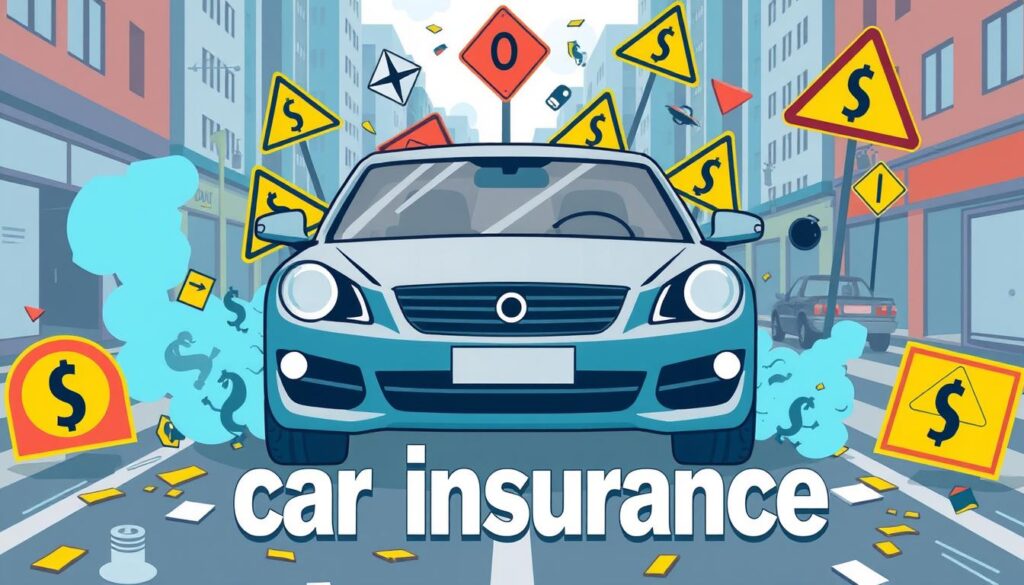Car insurance is essential for all drivers, but it can be especially challenging and expensive for high-risk drivers. Being classified as “high-risk” can significantly increase your premiums, making it difficult to find affordable coverage. However, understanding the factors that make a driver high-risk, and exploring the best car insurance options for high-risk drivers in 2024, can help you find the right policy that balances coverage and cost.
In this comprehensive guide, we will explore what it means to be a high-risk driver, how insurers determine risk, the types of car insurance available for high-risk drivers, and tips for finding affordable coverage.
What Is a High-Risk Driver?
Insurance companies classify drivers based on the level of risk they pose to the insurer. High-risk drivers are those who are more likely to file claims or cause accidents, making them a greater financial risk for insurance providers.
Factors That Make You a High-Risk Driver
There are several reasons you might be considered a high-risk driver, including:
- Traffic Violations and Accidents: If you have a history of speeding tickets, reckless driving, or multiple accidents, insurers may label you high-risk because your driving record shows a pattern of risky behavior.
- DUI or DWI Convictions: A conviction for driving under the influence (DUI) or driving while intoxicated (DWI) is one of the most common reasons for being classified as high-risk. These offenses signal to insurers that you have a history of dangerous driving.
- Young or Inexperienced Drivers: Teen drivers and those under 25 are considered high-risk because of their lack of experience behind the wheel and statistically higher accident rates. Additionally, new drivers of any age with no driving history may also face high premiums.
- Poor Credit History: In many states, insurance companies use your credit score as a factor when determining your risk. A poor credit score could indicate financial instability, which some insurers view as a higher likelihood of filing claims.
- Lapsed or No Previous Insurance: If you have gaps in your car insurance history or have never had insurance, insurers may see you as a higher risk since you haven’t consistently demonstrated responsible behavior in maintaining coverage.
- Serious Offenses: Major violations like vehicular manslaughter or fleeing the scene of an accident can land you in the high-risk category for many years.
Types of Car Insurance Available for High-Risk Drivers
Once you are classified as a high-risk driver, finding the right insurance policy can be more complicated and expensive. However, there are specific types of coverage that can meet your needs:
1. Standard Car Insurance with High-Risk Premiums
Some mainstream car insurance providers still offer policies to high-risk drivers but at much higher rates than standard policies. You may also face additional restrictions, such as higher deductibles or limited coverage options.
2. Non-Standard Car Insurance
Non-standard insurance is designed specifically for high-risk drivers. These policies may come with higher premiums, but they provide the necessary coverage for individuals with poor driving records. Some insurers specialize in this market, offering more flexible terms for drivers with traffic violations or DUIs.
3. SR-22 Insurance
If you’ve been convicted of a serious driving offense, like a DUI, or you’ve driven without insurance, you may be required to file an SR-22 form with your state. SR-22 is not a type of insurance but rather a certificate proving that you have the minimum required liability coverage. High-risk drivers who need SR-22 insurance often pay significantly higher premiums, but maintaining this coverage is essential to get back on the road legally.
4. Usage-Based Insurance (UBI)
Some high-risk drivers might benefit from usage-based insurance programs, which track your driving habits using telematics devices or mobile apps. These programs reward safe driving behavior with lower premiums, which can be helpful for high-risk drivers looking to improve their rates over time.
5. Assigned Risk Pools
In some states, high-risk drivers who cannot find coverage in the regular market may be eligible for the state’s assigned risk pool. These pools are designed to ensure that all drivers, regardless of risk, can access at least the state-mandated minimum coverage. However, rates in assigned risk pools are typically very high, and coverage options may be limited.
How Insurers Determine Premiums for High-Risk Drivers
Several factors influence the premiums insurers charge high-risk drivers. Understanding these can help you anticipate your rates and find ways to reduce them:
1. Driving Record
Your driving history is one of the most significant factors in determining your premium. A clean driving record results in lower rates, while tickets, accidents, and DUIs lead to much higher premiums.
2. Type of Vehicle
The make, model, and age of your vehicle can impact your premium. Expensive or high-performance cars tend to have higher insurance rates because they cost more to repair or replace. For high-risk drivers, insuring an older, more affordable car might help lower premiums.
3. Location
Where you live plays a significant role in your car insurance rates. Urban areas with higher traffic congestion and crime rates tend to have higher premiums. High-risk drivers living in cities may face steeper rates than those in rural areas.
4. Credit Score
In many states, insurers use your credit score to determine premiums. High-risk drivers with poor credit may face even higher rates, as insurers associate poor credit with a greater likelihood of filing claims.
5. Age and Gender
Young drivers, especially males under 25, are often considered high-risk due to statistical data showing they are more likely to be involved in accidents. Insurers may charge higher premiums for this demographic.
6. Coverage Levels
The amount of coverage you choose affects your premium. Opting for higher liability limits, collision coverage, and comprehensive insurance will increase your rates, while state-minimum coverage will be more affordable.
Tips for Finding Affordable Car Insurance for High-Risk Drivers
While high-risk drivers may face higher insurance premiums, there are several strategies you can use to find affordable coverage:
1. Compare Multiple Quotes
Shopping around for car insurance is crucial, especially for high-risk drivers. Different insurers have different policies and rates for high-risk drivers, so comparing multiple quotes can help you find the most affordable option. Use online comparison tools or work with an independent insurance agent to get quotes from various companies.
2. Take a Defensive Driving Course
Many insurance companies offer discounts to drivers who complete a defensive driving course. These courses teach safe driving techniques and can help you demonstrate to insurers that you’re committed to improving your driving habits.
3. Opt for Higher Deductibles
One way to reduce your monthly premium is by choosing a higher deductible. While this means you’ll have to pay more out of pocket in the event of a claim, it can lower your overall premium and make insurance more affordable in the short term.
4. Maintain Continuous Coverage
Lapses in your car insurance coverage can further increase your premiums, as insurers see this as a sign of irresponsible behavior. Ensure that you maintain continuous coverage, even if you’re considered high-risk, to avoid additional rate hikes.
5. Look for Discounts
Even high-risk drivers may qualify for various discounts. Common discounts include multi-car policies, bundling home and auto insurance, good student discounts for young drivers, and low-mileage discounts if you don’t drive often. Check with your insurer to see which discounts you may be eligible for.
6. Improve Your Credit Score
If your poor credit history is contributing to your high-risk status, work on improving your credit score. Pay your bills on time, reduce debt, and check your credit report for errors. Improving your credit can lead to lower car insurance premiums over time.
7. Consider Usage-Based Insurance
Usage-based insurance (UBI) programs allow you to pay for coverage based on how you drive. Insurers track your driving behavior through telematics devices or smartphone apps, and if you demonstrate safe driving habits, you could see a reduction in your premium. This option is especially useful for high-risk drivers who want to show improvement in their driving.
Best Car Insurance Companies for High-Risk Drivers in 2024
Finding the right insurer can make a big difference for high-risk drivers. Here are some companies that offer good options for high-risk drivers:
1. GEICO
GEICO is known for offering affordable policies, and they have options for high-risk drivers. GEICO provides SR-22 insurance and discounts for defensive driving courses, which can help high-risk drivers reduce their premiums.
2. Progressive
Progressive is one of the best insurance companies for high-risk drivers, offering flexible payment options and specialized coverage for drivers with poor records. Progressive’s Snapshot program is a usage-based insurance option that allows drivers to lower their premiums by driving safely.
3. State Farm
State Farm is another top choice for high-risk drivers. They offer SR-22 filings and other policies designed for high-risk drivers. With a variety of discounts, State Farm can help you find more affordable coverage even if your driving record isn’t perfect.
4. The General
The General specializes in providing coverage for high-risk drivers, including those with multiple accidents or violations on their record. They offer flexible payment plans and quick SR-22 filings, making them a popular choice for high-risk drivers.
5. Acceptance Insurance
Acceptance Insurance focuses on serving high-risk drivers, offering policies for drivers with bad credit, no insurance history, or those who require an SR-22. Their policies are designed to be affordable for high-risk drivers.
Conclusion
Car insurance for high-risk drivers can be expensive, but understanding what makes


